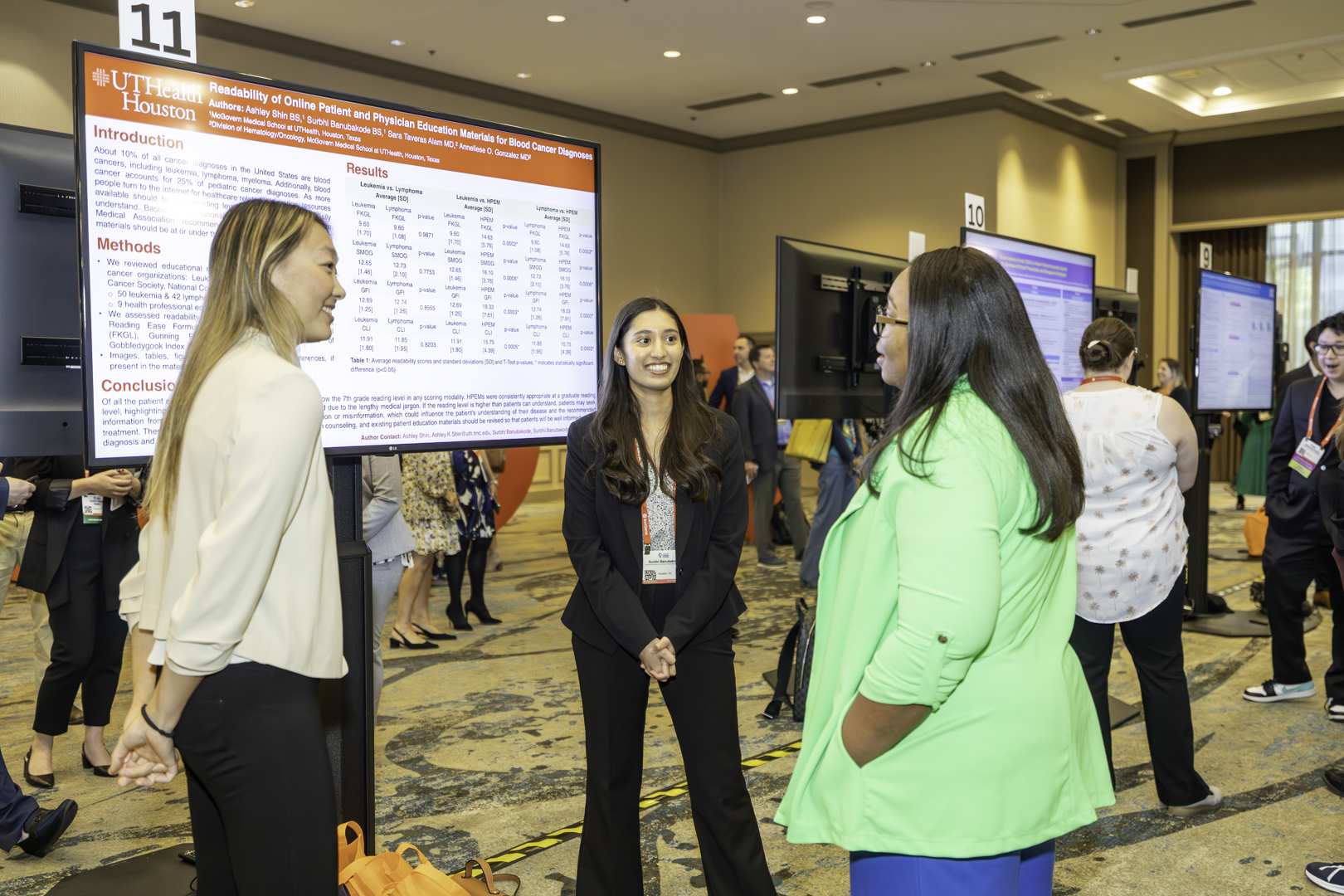2026 International Spring Forum
April 15, 2026 | 12:00 PM EST
OncolyticsToday: Measuring the Economic Value of Pharmacogenomics in Oncology
Published Date: April 22, 2025

By Christina Mitropoulou, PhD, MBA
Pharmacogenomics (PGx) holds immense potential in precision medicine, yet its economic value remains underexplored. Limited cost-effectiveness studies hinder policymakers from making informed decisions regarding reimbursement and adoption of PGx-guided therapies. Expanding economic evaluations could drive broader implementation and improve patient outcomes.
More than 350 medications currently bear PGx information in their labels, approved by major regulatory bodies worldwide, such as the United States Food and Drug Administration and the European Medicines Agency, allowing treating physicians to select drugs and doses more precisely to customize healthcare.
Yet, very few economic evaluation studies of genome-guided treatment modalities have been undertaken that would allow decision-makers to comparatively assess the value and clinical utility of such interventions, especially as far as precision therapeutics in oncology is concerned.
Despite the rapid advances in the field of PGx and the enthusiasm of many clinicians and researchers regarding its potential,1 the policy implications are important but lack clear action steps for policymakers.2 By enriching the existing evidence level, PGx can play an important role towards a more efficient healthcare system with more beneficial treatment modalities and less therapies that either pose substantial risk or are unlikely to improve outcomes to the patients, especially in the field of oncology.
As such, it is absolutely necessary to undertake more studies to assess cost-effectiveness or cost-utility of genome-guided treatment modalities that would offer stakeholders and policymakers comparative assessments of the value of such interventions, so that they can be ideally reimbursed by national healthcare systems.3
LIMITED RESEARCH
There have been few real-world pharmacogenomics clinical studies in oncology and even fewer studies dealing with economic evaluation of these genome-guided therapeutic interventions, especially based on real data from retrospective or (even better) prospective clinical studies.
Fluoropyrimidines have been widely used for more than 60 years against a range of solid tumors and still remain the cornerstone for the treatment of colorectal, gastric and breast cancer. In 2019, an economic analysis to estimate the cost of DPYD-guided toxicity management and the clinical benefit expressed as quality adjusted life years (QALYs) was performed using a large group of 571 cancer patients of Italian origin and treated with a fluoropyrimidines-based chemotherapy. Individuals suffering from cancer with a histologically confirmed diagnosis of cancer, who received a fluoropyrimidines-based treatment, were retrospectively genotyped in the DPYD gene.
Effectiveness was measured as survival of individuals from chemotherapy, while study data on safety and efficacy as well as on resource utilization associated with each adverse drug reaction were used to measure costs to treat these adverse drug reactions. A generalized linear regression model was used to estimate cost differences for both study groups.
This study showed that 528 patients who were characterized as DPYD extensive metabolizers had greater effectiveness and fewer costs with mean QALYs of 4.18 (95%CI: 3.16 – 5.55), representing a cost-saving option over the 43 patients that were DPYD intermediate and poor metabolizers with mean QALYs of 3.02 (95%CI: 1.94 – 4.25). The cost of DPYD extensive metabolizers was significantly lower compared with those belonging to the group of intermediate/poor metabolizers.4
Similarly, a cost-utility analysis was also conducted in 2022 to evaluate genome-guided treatment compared to the standard-of-care intervention among patients diagnosed with colorectal cancer in Italy. This study involved data derived from a prospective, open-label, block randomized clinical trial, as a part of the largest PGx study worldwide (355 patients in both arms). Mortality was used as the primary health outcome to estimate life years (LYs) gained in treatment arms within a survival analysis context. PGx-guided treatment was based on established drug-gene interactions between capecitabine, 5-fluorouracil and
irinotecan with DPYD and/or UGT1A1 genomic variants. Utility values for the calculation of QALYs were based on the Visual Analog Scale score. The most frequent adverse drug event in both groups was neutropenia of severity grade 3 and 4, accounting for 82.6% of total events in the genome-guided arm and 65.0% in the standard-of-care arm.
In this study, the total cost of the genome-guided arm was estimated at €380 (~US $416; 95%CI: 195-596) compared to €565 (~US $655; 95%CI: 340-724) of the standard-of-care arm while the mean survival in the genome-guided arm was estimated at 1.58 (+0.25) LYs vs 1.50 (+0.26) (Log Rank test, X2=4.219, df=1, p-value=0.04). ICER was estimated at €13418 (~US$14695) per QALY.5
Overall, these findings suggest that PGx-guided treatment strategy may represent a cost-saving option compared to the existing conventional therapeutic approach for cancer patient management in the National Health Service of Italy. Similar studies must be undertaken in other healthcare systems to confirm this outcome, as economic evaluation studies cannot be extrapolated in other healthcare settings.
It is imperative to provide evidence to regulatory authorities and healthcare payers that PGx testing is ready for clinical implementation and that can genuinely improve the quality of life and increase life expectancy of patients in a cost-effective manner.
OUTCOMES AND ECONOMICS
In general, the minimum requirement to adopt a PGx test lies in the strong association of PGx biomarker(s) and primary outcomes — mainly drug toxicity, or often, lack of efficacy — accompanied by a clear recommendation as far as the drug dose adjustment is concerned.
Once such an association is available, economic evaluation comes into the picture to model results, based on clinical and economic data.2 The value of a PGx test is calculated mostly considering the additional benefit to the patient and the extra costs incurred. As such, if there is no clear evidence of the clinical utility of a PGx test, it makes no sense to implement or reimburse it.3
Another parameter to consider is the fact that clinical utility of a genome-guided intervention can not only be judged based on financial costs but also based on the effectiveness of treatment individualization.2 Both of these elements are needed to assess the value of healthcare resources used.
In other words, one should not only look at the overall costs of a specific treatment but also at the quality of life and life-year gained as a result of a new treatment or technology. An easily conceivable analogy is to compare the better road safety offered by driving a more expensive car compared to driving a cheaper car.
In the case of fluoropyrimidines, the DPYD-guided therapeutic intervention for cancer patients is both better for the patients and cheaper for the healthcare system, possibly representing a more acceptable financial risk for healthcare payers.
THE NEED FOR ECONOMIC EVALUATION
It is evident that there is an urgent need to perform economic evaluation of additional PGx studies. These efforts will aim to demonstrate that PGx testing is ready for clinical implementation based on the continuously increased evidence for their clinical utility and, at the same time, that PGx testing costs can be reimbursed by healthcare systems, as PGx testing costs continue to decline.
Finally, preemptive PGx testing may constitute an even better and a more cost-effective approach than the classical PGx approach. With preemptive PGx testing, genotyping is simultaneously and prospectively performed for multiple actionable PGx biomarkers for each patient such that they are readily available at the time of decision-making for a wide variety of common drug treatment modalities, not only in oncology but also in various medical specialties.
The immediate knowledge of a patient’s PGx variation, along with the corresponding interpretation and accompanying recommendations, does not disrupt routine clinical care. It stands as a clear advantage and perhaps a cost-effective option compared to the classical PGx approach when PGx biomarker genotyping occurs each time prior to the prescription of a certain medication, respectively.
This approach has shown to be clinically beneficial leading to a 30% reduction of adverse drug reactions, as well as cost-effective (manuscript in preparation). Also, this approach is time-efficient, as the patient’s PGx information and corresponding recommendations are available at the time physicians need to decide on the optimal drug dose, hence increasing the chances of reaching the optimal drug dose faster.6
CONCLUSION
Pharmacogenomics has the potential to revolutionize medicine by enabling personalized drug treatment plans, allowing doctors to select the most effective medications and doses for individual patients based on their genetic makeup, thereby minimizing adverse drug reactions and maximizing treatment efficacy while potentially reducing healthcare costs.
It is, therefore, imperative to provide evidence to regulatory authorities and healthcare payers that PGx testing is ready for clinical implementation and that it genuinely improve the quality of life and increase life expectancy of patients in a cost-effective manner. This way, PGx testing costs are reimbursed by healthcare systems and PGx testing services gets broadly implemented.
Additional Information
1. Pirmohamed, M. Personalized pharmacogenomics: predicting efficacy and adverse drug reactions. Annu. Rev. Genomics Hum. Genet. 15, 349-370 (2014).
2. Mitropoulou, C., Mai, Y., van Schaik, R.H., Vozikis, A., & Patrinos, G.P. Documentation and analysis of the policy environment and key stakeholders in pharmacogenomics and genomic medicine in Greece. Public Health Genomics 17, 280-286 (2014).
3. Fragoulakis, V., Mitropoulou, C., Williams, M.C., & Patrinos, G.P. Economic Evaluation in Genomic Medicine. Elsevier/Academic Press, Burlington, Ca, USA, (2015).
4. Fragoulakis V, Roncato R, Fratte CD, Ecca F, Bartsakoulia M, Innocenti F, Toffoli G, Cecchin E, Patrinos GP, Mitropoulou C. Estimating the Effectiveness of DPYD Genotyping in Italian Individuals Suffering from Cancer Based on the Cost of Chemotherapy-Induced Toxicity. Am J Hum Genet. 104(6):1158-1168 (2019).
5. Fragoulakis V, Roncato R, Bignucolo A, Patrinos GP, Toffoli G, Cecchin E, Mitropoulou C. Cost-utility analysis and cross-country comparison of pharmacogenomics-guided treatment in colorectal cancer patients participating in the U-PGx PREPARE study. Pharmacol Res. 197:106949 (2023).
6. Swen JJ, van der Wouden CH, Manson LE, Abdullah-Koolmees H, Blagec K, Blagus T, Böhringer S, Cambon-Thomsen A, Cecchin E, Cheung KC, Deneer VH, Dupui M, Ingelman-Sundberg M, Jonsson S, Joefield-Roka C, Just KS, Karlsson MO, Konta L, Koopmann R, Kriek M, Lehr T, Mitropoulou C, Rial-Sebbag E, Rollinson V, Roncato R, Samwald M, Schaeffeler E, Skokou M, Schwab M, Steinberger D, Stingl JC, Tremmel R, Turner RM, van Rhenen MH, Dávila Fajardo CL, Dolžan V, Patrinos GP, Pirmohamed M, Sunder-Plassmann G, Toffoli G, Guchelaar HJ; Ubiquitous Pharmacogenomics Consortium. A 12-gene pharmacogenetic panel to prevent adverse drug reactions: an open-label, multicentre, controlled, cluster-randomised crossover implementation study. Lancet. 401(10374):347-356 (2023).

Christina Mitropoulou, PhD, MBA, is Managing Director, Trustee and Senior Health Economist at The Golden Helix Foundation, London, and an adjunct assistant professor at United Arab Emirates University, College of Medicine, Department of Genetics and Genomics, Al-Ain, United Arab Emirates.






